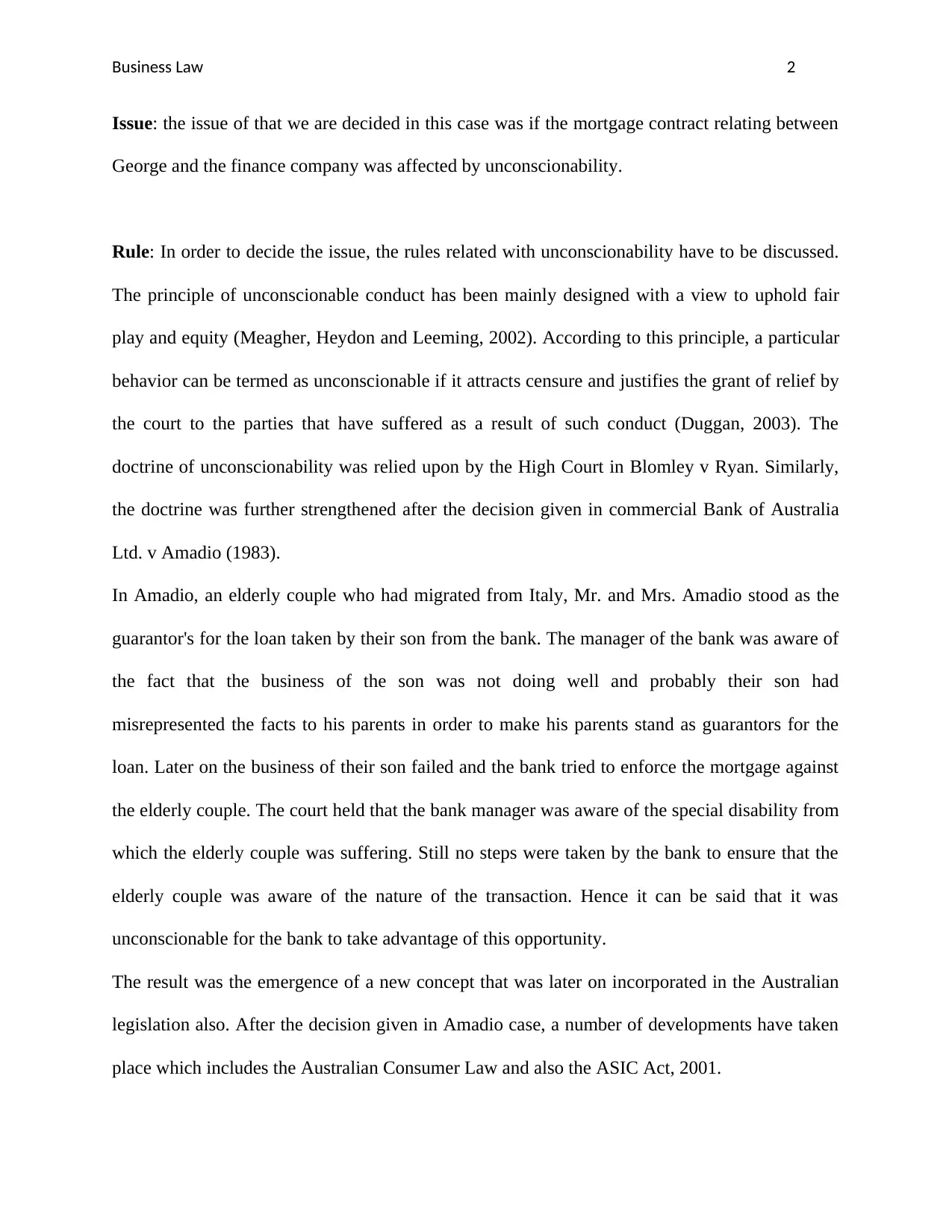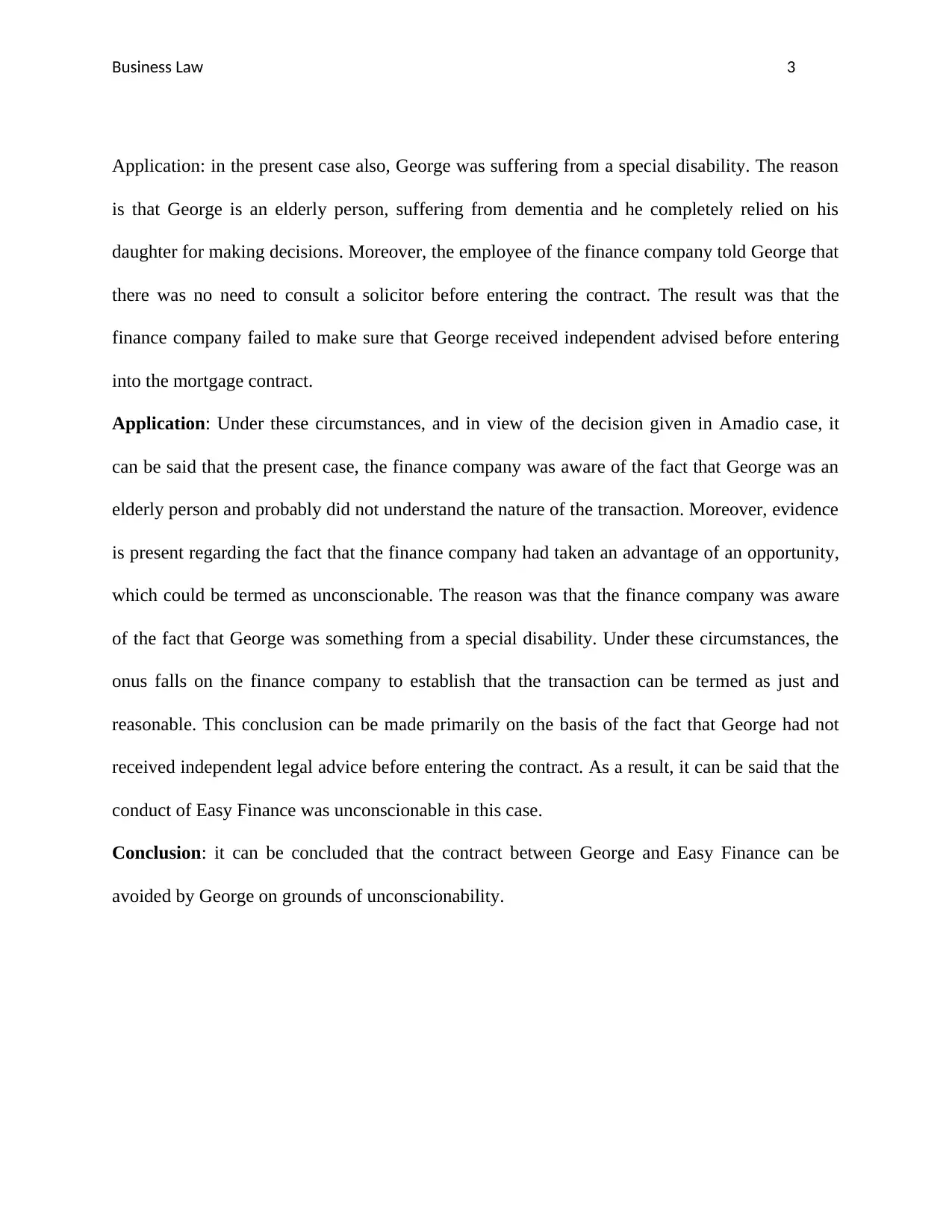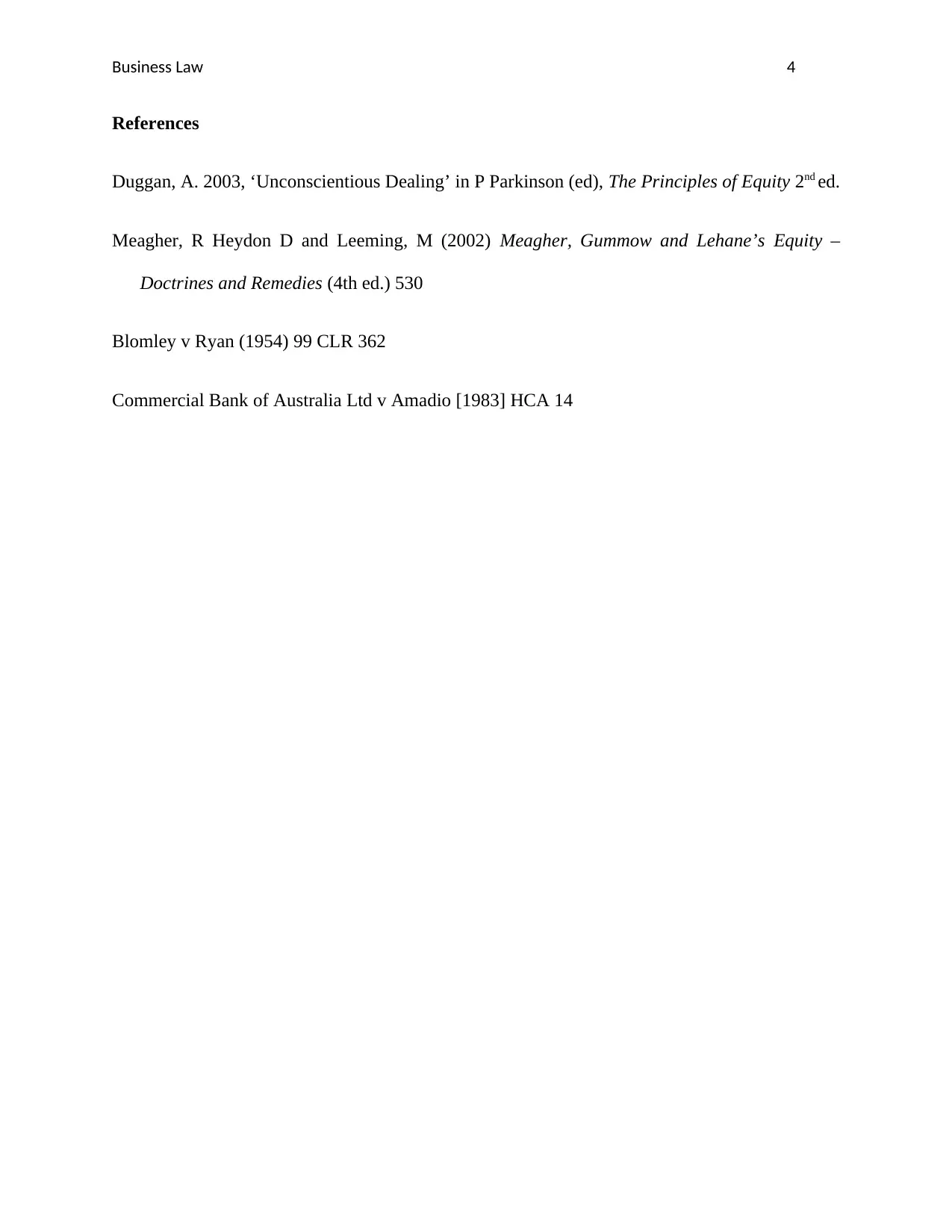Case Study: Unconscionability in Business Law and Contract Disputes
VerifiedAdded on 2020/03/02
|4
|734
|46
Case Study
AI Summary
This case study examines the issue of unconscionability in a business law context, specifically focusing on a mortgage contract between George and a finance company. The analysis explores the legal principle of unconscionable conduct, referencing key cases like Blomley v Ryan and Commercial Bank of Australia Ltd. v Amadio. It highlights how George's special disability, stemming from his age, dementia, and reliance on his daughter, coupled with the finance company's failure to ensure independent legal advice, rendered the contract potentially unconscionable. The application section draws parallels with the Amadio case, arguing that the finance company took advantage of George's vulnerability. The conclusion asserts that the contract can be avoided on grounds of unconscionability, supported by references to relevant legal literature. This case study provides a clear understanding of the concept of unconscionability and its implications in contract law.
1 out of 4











![[object Object]](/_next/static/media/star-bottom.7253800d.svg)